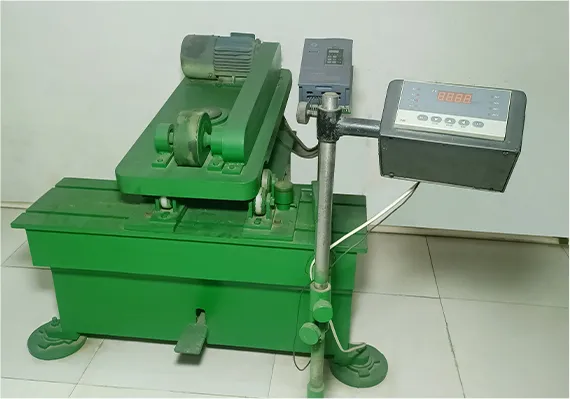 Afrikaans
Afrikaans  Albanian
Albanian  Amharic
Amharic  Arabic
Arabic  Armenian
Armenian  Azerbaijani
Azerbaijani  Basque
Basque  Belarusian
Belarusian  Bengali
Bengali  Bosnian
Bosnian  Bulgarian
Bulgarian  Catalan
Catalan  Cebuano
Cebuano  Corsican
Corsican  Croatian
Croatian  Czech
Czech  Danish
Danish  Dutch
Dutch  English
English  Esperanto
Esperanto  Estonian
Estonian  Finnish
Finnish  French
French  Frisian
Frisian  Galician
Galician  Georgian
Georgian  German
German  Greek
Greek  Gujarati
Gujarati  Haitian Creole
Haitian Creole  hausa
hausa  hawaiian
hawaiian  Hebrew
Hebrew  Hindi
Hindi  Miao
Miao  Hungarian
Hungarian  Icelandic
Icelandic  igbo
igbo  Indonesian
Indonesian  irish
irish  Italian
Italian  Japanese
Japanese  Javanese
Javanese  Kannada
Kannada  kazakh
kazakh  Khmer
Khmer  Rwandese
Rwandese  Korean
Korean  Kurdish
Kurdish  Kyrgyz
Kyrgyz  Lao
Lao  Latin
Latin  Latvian
Latvian  Lithuanian
Lithuanian  Luxembourgish
Luxembourgish  Macedonian
Macedonian  Malgashi
Malgashi  Malay
Malay  Malayalam
Malayalam  Maltese
Maltese  Maori
Maori  Marathi
Marathi  Mongolian
Mongolian  Myanmar
Myanmar  Nepali
Nepali  Norwegian
Norwegian  Norwegian
Norwegian  Occitan
Occitan  Pashto
Pashto  Persian
Persian  Polish
Polish  Portuguese
Portuguese  Punjabi
Punjabi  Romanian
Romanian  Russian
Russian  Samoan
Samoan  Scottish Gaelic
Scottish Gaelic  Serbian
Serbian  Sesotho
Sesotho  Shona
Shona  Sindhi
Sindhi  Sinhala
Sinhala  Slovak
Slovak  Slovenian
Slovenian  Somali
Somali  Spanish
Spanish  Sundanese
Sundanese  Swahili
Swahili  Swedish
Swedish  Tagalog
Tagalog  Tajik
Tajik  Tamil
Tamil  Tatar
Tatar  Telugu
Telugu  Thai
Thai  Turkish
Turkish  Turkmen
Turkmen  Ukrainian
Ukrainian  Urdu
Urdu  Uighur
Uighur  Uzbek
Uzbek  Vietnamese
Vietnamese  Welsh
Welsh  Bantu
Bantu  Yiddish
Yiddish  Yoruba
Yoruba  Zulu
Zulu Understanding the Importance of Conveyor Training and Selection of the Right Idlers for Efficiency
Understanding Conveyor Training Idlers Essential Components for Optimal Performance
Conveyor systems are a vital part of modern industrial operations, facilitating the efficient movement of materials in various sectors, including manufacturing, mining, and logistics. Among the key components that contribute to the effective functioning of these systems are conveyor training idlers. Understanding their role and importance is crucial for optimizing conveyor performance and minimizing operational disruptions.
What are Conveyor Training Idlers?
Conveyor training idlers are specific types of rollers used in conveyor systems to maintain the alignment of the belt. They are strategically positioned along the conveyor’s path and play a critical role in preventing belt misalignment and ensuring that the materials being transported remain centered on the belt. This helps in reducing wear and tear on both the belt and the conveyor structure, ultimately extending the lifespan of the equipment.
The Importance of Proper Alignment
Misalignment in conveyor belts can lead to a range of issues, including increased wear on the belt edges, reduced efficiency in material transfer, and even potential safety hazards. Training idlers help combat these problems by guiding the belt back to its intended track and keeping it centered during operation. The proper alignment ensured by these idlers means that the materials are conveyed smoothly, reducing the risk of spillage and improving overall operational efficiency.
Types of Conveyor Training Idlers
There are several types of conveyor training idlers, each designed for specific applications and environments. The most common types include
1. Self-Aligning Idlers These idlers automatically adjust to the belt’s position, making them a popular choice for applications where misalignment is frequent.
conveyor training idlers

2. Crossed Roller Idlers Designed with rollers positioned at an angle, these idlers help in correcting the belt path by encouraging self-centering.
3. Horizontal Training Idlers These are used in situations where the belt has a tendency to drift to one side, particularly in long conveyors.
Selecting the appropriate type of training idler depends on a variety of factors, including the layout of the conveyor, the materials being handled, and the environmental conditions.
Maintenance and Best Practices
To ensure the effectiveness of training idlers, regular maintenance is essential. This includes checking for wear, ensuring that rollers are not obstructed by debris, and confirming that all components are properly lubricated. Additionally, operators should conduct periodic inspections to identify any signs of misalignment early on, thus preventing more significant issues down the line.
Moreover, integrating training idlers into a robust maintenance schedule, alongside other preventive measures such as tracking adjustments and tensioning checks, is essential. This comprehensive approach not only enhances the performance of the conveyor system but also contributes to safety and cost efficiency.
Conclusion
Conveyor training idlers are indispensable components that contribute significantly to the effectiveness and longevity of conveyor systems. By maintaining proper belt alignment, they play a crucial role in ensuring smooth operations and maximizing efficiency. Understanding the various types of training idlers and implementing a proactive maintenance strategy can help organizations avoid costly downtime and enhance their overall operational productivity. As industries continue to evolve, the role of training idlers will remain critical in supporting the efficient and safe transport of materials, making them a key area of focus for any organization that relies on conveyor systems.
-
Revolutionizing Conveyor Reliability with Advanced Rubber Lagging PulleysNewsJul.22,2025
-
Powering Precision and Durability with Expert Manufacturers of Conveyor ComponentsNewsJul.22,2025
-
Optimizing Conveyor Systems with Advanced Conveyor AccessoriesNewsJul.22,2025
-
Maximize Conveyor Efficiency with Quality Conveyor Idler PulleysNewsJul.22,2025
-
Future-Proof Your Conveyor System with High-Performance Polyurethane RollerNewsJul.22,2025
-
Driving Efficiency Forward with Quality Idlers and RollersNewsJul.22,2025





























